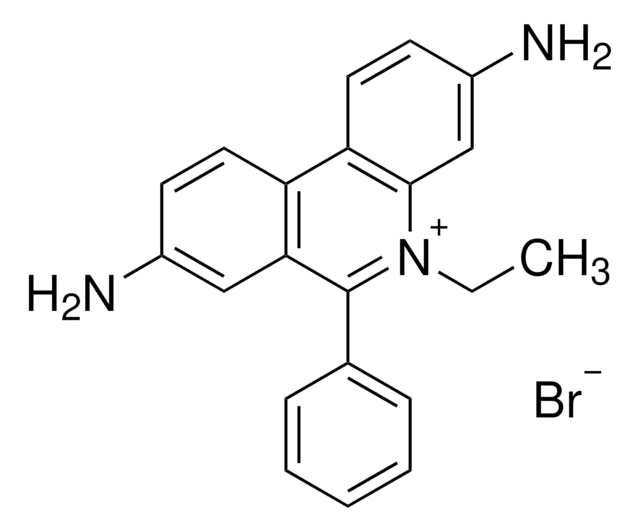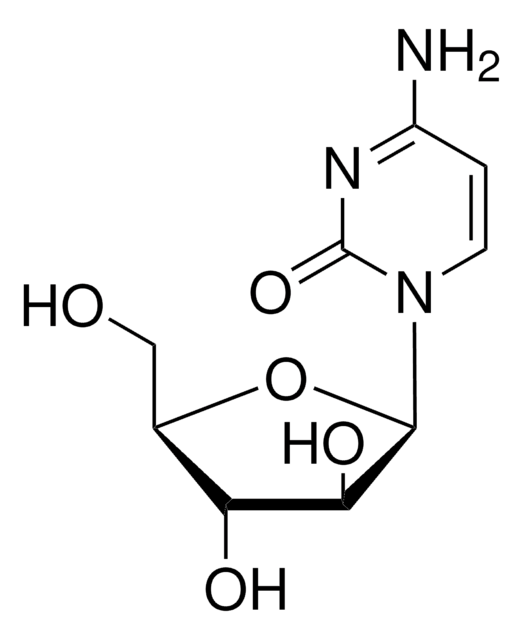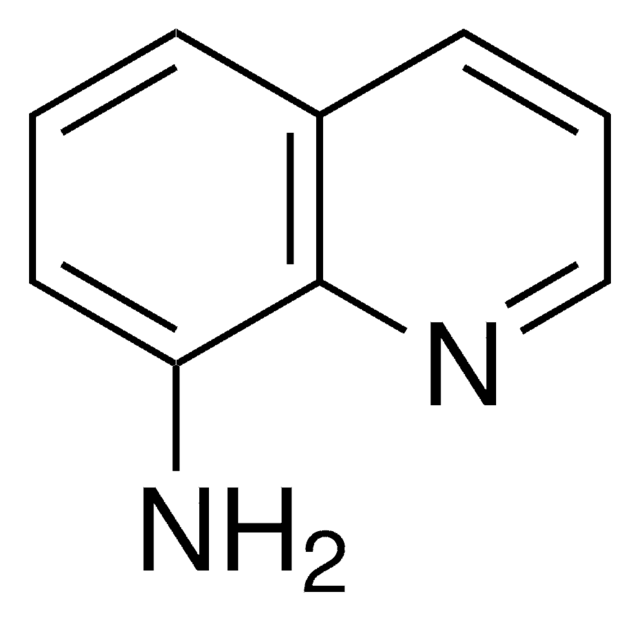A8986
Alexidine dihydrochloride
≥95% (HPLC)
Sinónimos:
1,1′-Hexamethylene-bis(5-[2-ethylhexyl]biguanide)
About This Item
Productos recomendados
Quality Level
assay
≥95% (HPLC)
form
powder
storage condition
desiccated
color
white to off-white
solubility
DMSO: ≥10 mg/mL
storage temp.
−20°C
SMILES string
Cl.Cl.CCCCC(CC)CNC(=N)NC(=N)NCCCCCCNC(=N)NC(=N)NCC(CC)CCCC
InChI
1S/C26H56N10.2ClH/c1-5-9-15-21(7-3)19-33-25(29)35-23(27)31-17-13-11-12-14-18-32-24(28)36-26(30)34-20-22(8-4)16-10-6-2;;/h21-22H,5-20H2,1-4H3,(H5,27,29,31,33,35)(H5,28,30,32,34,36);2*1H
InChI key
BRJJFBHTDVWTCJ-UHFFFAOYSA-N
¿Está buscando productos similares? Visita Guía de comparación de productos
Application
- as an antiseptic to study its antimicrobial activity in saliva-derived microcosm biofilms
- as a protein tyrosine phosphatase localized to the mitochondrion 1 (PTPMT1)-specific inhibitor to study its effects on spare respiratory capacity and viability of CD8+ T cells
- as a PTPMT1 inhibitor to study its antiviral effect on human cytomegalovirus (HCMV) replication in HCMV-infected human foreskin fibroblast (HFF) cells
Biochem/physiol Actions
Features and Benefits
signalword
Warning
hcodes
Hazard Classifications
Eye Irrit. 2 - Skin Irrit. 2 - STOT SE 3
target_organs
Respiratory system
Storage Class
11 - Combustible Solids
wgk_germany
WGK 3
flash_point_f
Not applicable
flash_point_c
Not applicable
Elija entre una de las versiones más recientes:
¿Ya tiene este producto?
Encuentre la documentación para los productos que ha comprado recientemente en la Biblioteca de documentos.
Los clientes también vieron
Artículos
Sigma-Aldrich offers many products related to phosphoprotein phosphatases (Tyrosine) for your research needs.
Nuestro equipo de científicos tiene experiencia en todas las áreas de investigación: Ciencias de la vida, Ciencia de los materiales, Síntesis química, Cromatografía, Analítica y muchas otras.
Póngase en contacto con el Servicio técnico











